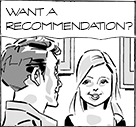Page 45 Review by Stephen
Welcome to one of my top-five graphic novels of all time: it's like Simon Schama on acid.
From the very first pages past the theatrical poster laced with mischief, this remarkable accomplishment of rare imagination explores every conceivable possibility of presentation, harnesses this medium's unique properties to their individual and often multiple tasks, and has fun with them. It is extraordinary, and it starts immediately: the first page is a sketch, the second full pencils, the third tightly rendered in inks, so that the audience arrives at the fully formed entertainment the very same way its creator does. Literally as well, for the protagonist approaching the Empire Theatre in Sunderland on those self-same, rabbit-hole pages is Bryan Talbot himself!
A more apposite entry to this fantastical reality - investigating the strange logics of Lewis Carroll's works, Alice Liddell who inspired them, and their connections to Sunderland and its surroundings - you could not imagine, and if for the moment you know little of Carroll, nothing of Sunderland, and haven't a clue what I meant by "rabbit hole," then you're in for a treat.
It begins in Sunderland's Empire Theatre, a palace of varieties on its 100th anniversary, where Bryan the boorish Plebeian, as tough as the region's past audiences and now armed with that most intrusive of modern beasts, the mobile phone, is startled by the traditionally tardy White Rabbit, takes a ticket from Tenniel's shop sheep, then sits unimpressed as a man in rabbit mask - Bryan The Performer - conjures up the living ghosts of entertainers who have gone before him (George Formby, Sid James...), bringing them back to the stage to perform once more as if they had never stopped. Indeed Sid James has haunted the likes of Les Dawson there, for it's where he died mid-performance in 1976. "The audience is offered a refund. Nobody claims their money back." The Performer pauses for the moment on the story of the sole original work to be commissioned for the Empire based on the two Alice books: "Why the choice of subject matter? What has Alice to do with Sunderland?" At which point, in one of many such tricks perfectly reflecting the morphing aspects of "Through The Looking Glass", we pull back to discover that Bryan the Performer is merely a cartoon construct being drawn by Bryan Talbot himself!
It's this Pilgrim aspect of Bryan who takes us out the front door of his Victorian terraced house and begins to answer the question above, as he shows and tells of the twin threads of "Alice" and Sunderland which snake over and around each other, wrapping themselves up in a helix of history to provide all the evidence in the world that it is not Oxford that holds the keys to the two Alice books, but the North East where Carroll spent so much time.
Take, for example, the local legends of the Lampton Worm or the Sockburn Wyvern, inspirations for The Jabberwocky nonsense poem which the area's constant perambulator, Lewis Carroll, incorporated into "Through The Looking Glass". The second serpent-creature there was slain in legend by Lord Beamish ("Come to my arms, my beamish boy!"), an ancestor of Alice Liddell, the girl Carroll based his books on and originally wrote them for.
Some of these stories are brought alive in comics within the comic, each in a different style dictated by its content. Others are built up in a house of cards, delivered in art lectures, or even presented as a stroll down the Wear's north bank with Chaz and Colin, the real-life creators of its extensive trail of stunning art installations. "It's all about tying the past and present together," one of them concurs, "linking what's new with what was here before," thereby making the distinction between projects forced on a community, and those forged in its heart, with its input, and from its rich history. That sequence had me booking my ticket to Sunderland to make a pilgrimage of my own. Just wait until you see their sequential metal sculpture of a cormorant "Taking Flight": it's a three-dimensional comic!
Talbot employs a multitude of media and devices himself: photography, line, memorabilia, William Hogarth and Sir John Tenniel drawings ("well out of copyright") all blended in a seamless collage, meticulously composed and devilishly delivered. I'm an enormous fan of Simon Schama, the BBC's most entertaining historian, but Talbot's chosen medium offers him infinitely more flexibility than any television programme would allow to make this as much an entertainment as an education.
Oh, you'll learn surprising stuff here: Sunderland isn't in the Doomsday Book; it was represented by accident in the American section of The Grand Exhibition at Crystal Palace; Carroll is the most quoted English writer after Shakespeare; and the Bayeux Tapestry is neither French nor a tapestry. There's also some stuff less surprising to those who read outside the Daily Mail: immigrants to our shores are nothing new - and they used to wield axes! But most of the time you'll be too busy swooning over the images to notice you're being educated, and it climaxes in one of the most affecting passages in any graphic novel, an urgent, considered and rousing rallying cry against racism.
This is a work of bravura. With so many slights of hands, it's the act of a skilled magician for which you need creativity, craft, charisma and conviction, forging links between ancient myth, ageless history and artistic accomplishment to form a chain of connections previously invisible and turn them into a performance of varieties so extraordinary that you never know what Talbot will pull out of his top hat next.


